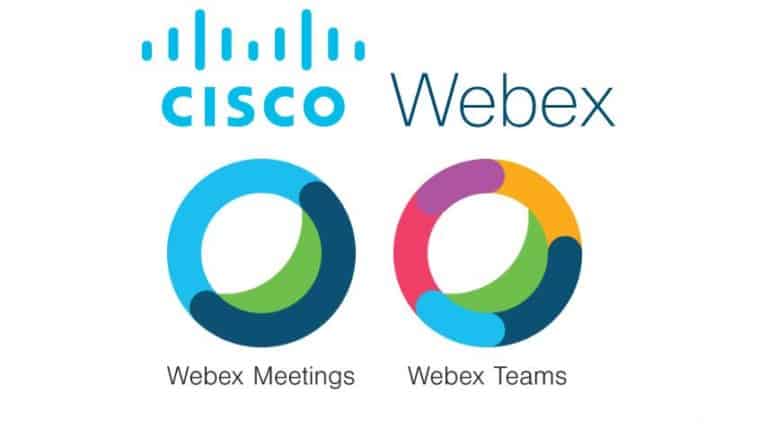Avit Group was founded in 2003 as a specialist in IP telephony and IP networks. In the meantime, in addition to enterprise networking, this expertise has developed into a focus on collaboration tools, the unified workspace and security solutions. Avit has won the Cisco Collaboration Award several times, which prompted us to inquire about what is planned for the upcoming period. According to Cisco, Avit has the expertise that can be leveraged to help customers make the transition from on-premise to cloud. We spoke with both companies to explore new collaboration technology in more depth.
Avit has been a Cisco Gold Partner since 2012. Cisco’s strategy is to move to a full Software-as-a-Service (SaaS) model, and when it comes to collaboration, it’s all about collaboration solution Webex. Cisco’s ultimate goal with Webex is to facilitate everything that customers might need in terms of collaboration. At the moment, Webex is mainly used for video conferencing and chats, which has proven to be extremely relevant in this day and age. The corona crisis is forcing companies to collaborate remotely. Our discussion is particularly applicable to the current situation, since collaboration tools such as Webex have become one of the most important tools for companies to keep their heads above water. Apart from that ‘good’ timing, however, Kraanen and Roggeveen also talked about a number of plans that will remain interesting after the corona crisis.
Cisco is committed to ease of use
Cisco’s plans for Webex in 2020 can be summed up in two words: maximum ease of use. Roggeveen explains that the focus is on technologies such as AI, which, for example, enable speech control and face recognition. With Webex, for example, you can use speech to add new participants to a video call or start a meeting. In the future, face recognition could recognize who joined the call. This means that the correct name appears on the screen immediately and users don’t have to find out who they are talking to first. This type of technology should make it possible for users to fully focus on their conversation, rather than on peripheral circumstances. By talking to users, Cisco wants to explore further what exactly is needed to make those peripheral conditions as smooth as possible.
Another example of technology to make things easier and more simplified is real-time transcription, which is currently available in English and Spanish; other languages are under development. Such innovation provides users with an instant transcription of a meeting, conversation or interview, without the need for additional software or manual minute-taking. These kinds of tools really save the users of Webex a lot of work and time.
Avit is the connection between Cisco and the user
There is a missing connection that often exists between end-user applications and the generic apps of major vendors like Cisco. Building connectors, to integrate collaboration tools such as Webex into customer applications, is something where Avit’s expertise really comes into play. For example, collaboration tools can be integrated directly into CRM solutions, but also into applications that may be less obvious. Think, for example, of patient environments at medical workplaces, where smooth integrations can lead to less waste of time and therefore better care.
Remote medical care also becomes easier with the integration of collaboration tools because medical staff immediately have their own applications at hand. Supporting specific verticals of this kind is something that Avit focuses specifically on. The use of Cisco solutions such as Webex can thus be fine-tuned to the specific industry in which a customer is active. So a solution adapts to the user, rather than the other way around.
Also read: Cisco takes on Teams and Slack with Webex
Providing this added value is one of the reasons why Avit Gold is a Cisco Partner. This trust is also visible in the company’s short-term plans. Kraanen says that Avit has developed a complete automation layer that is suitable for on-premise, as-a-Service, but also hybrid environments. This automation must ensure that collaboration is possible on an extremely large scale, with large numbers of users being able to use the same platform. It will also automate the transition from on-premise to cloud. Kraanen specifically mentions an example of a customer in which employees from dozens of different cultures must all be able to use a specific video conferencing system. Avit can ensure that all these employees have the same interface in front of them, and thus the same user experience. From dozens of linked sources, a single entity is created. Such projects will eventually be scalable to 200,000 users.
Looking to the future
As far as Techzine is concerned, these large-scale projects are the future. It is not inconceivable that collaboration tools will continue to play a greater role, with the current crisis in mind. On the other hand, it is questionable how great the impact of the corona crisis on the economy will be, because then these kinds of ambitious plans could be put on the back burner. If we leave that aside, however, it is extremely interesting to continue to monitor what new innovations are coming to Cisco, and how they are being brought to customers in new and creative ways by specialists like Avit.
Tip: Read our comparison on all the different video conferencing tools.
